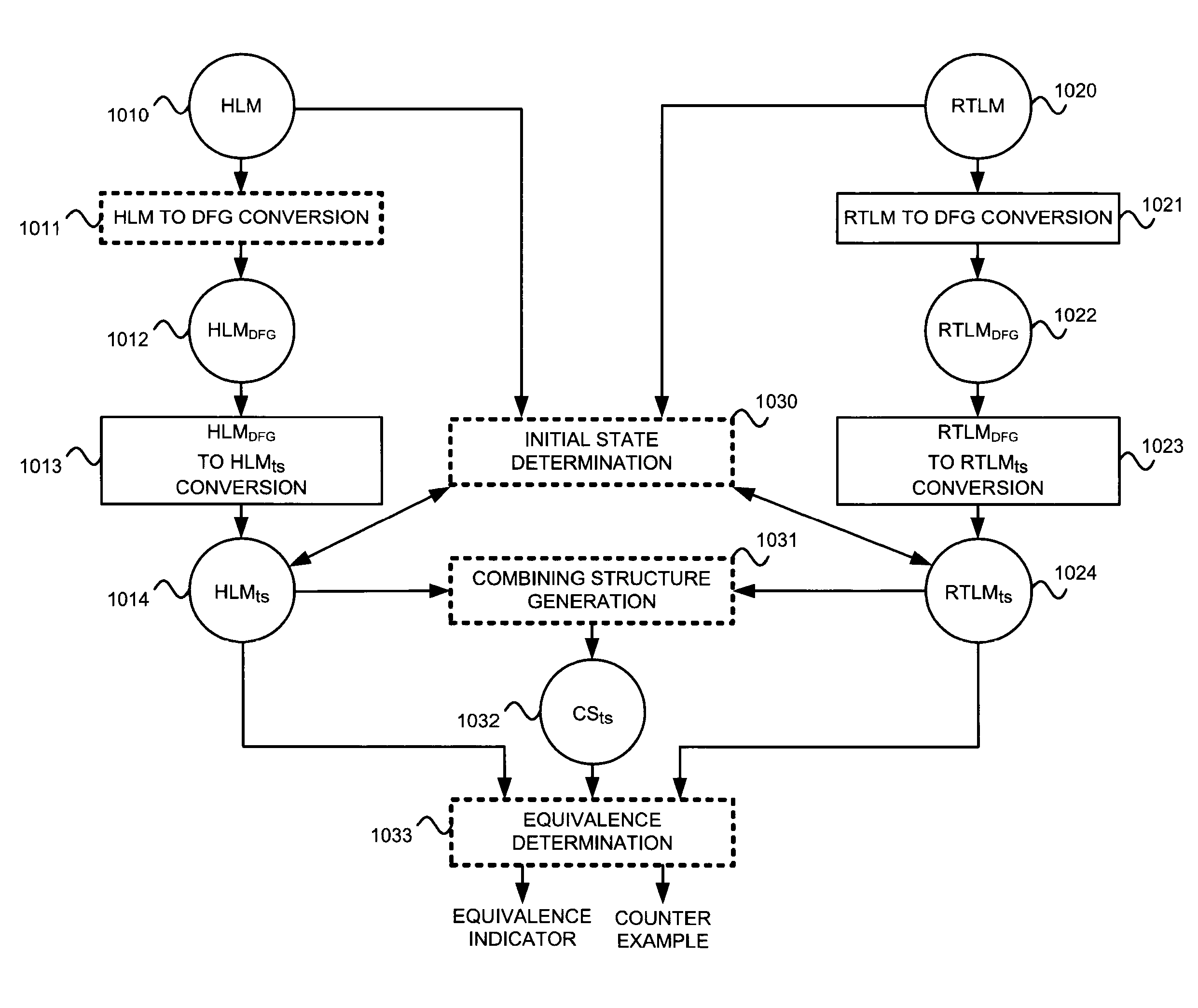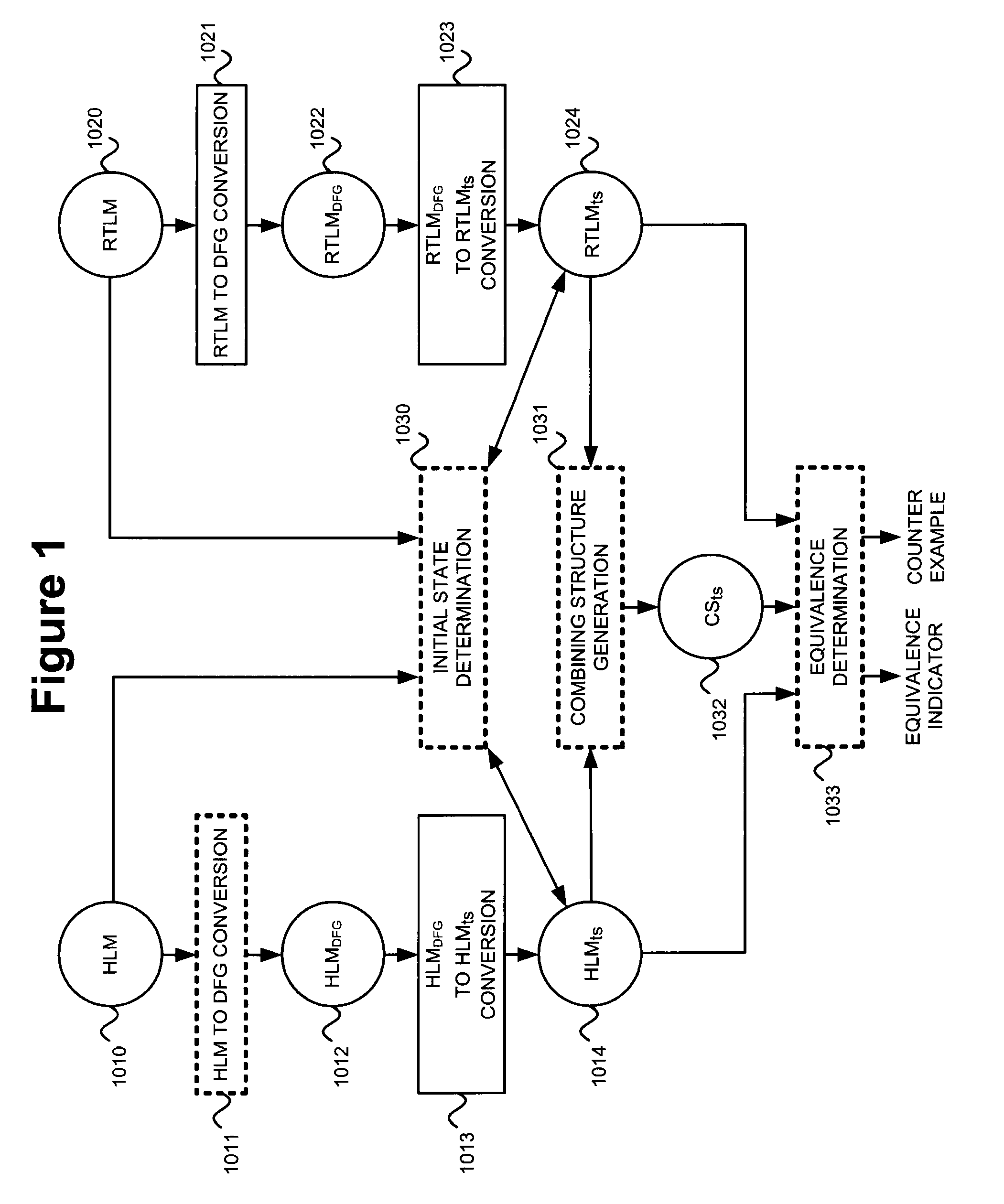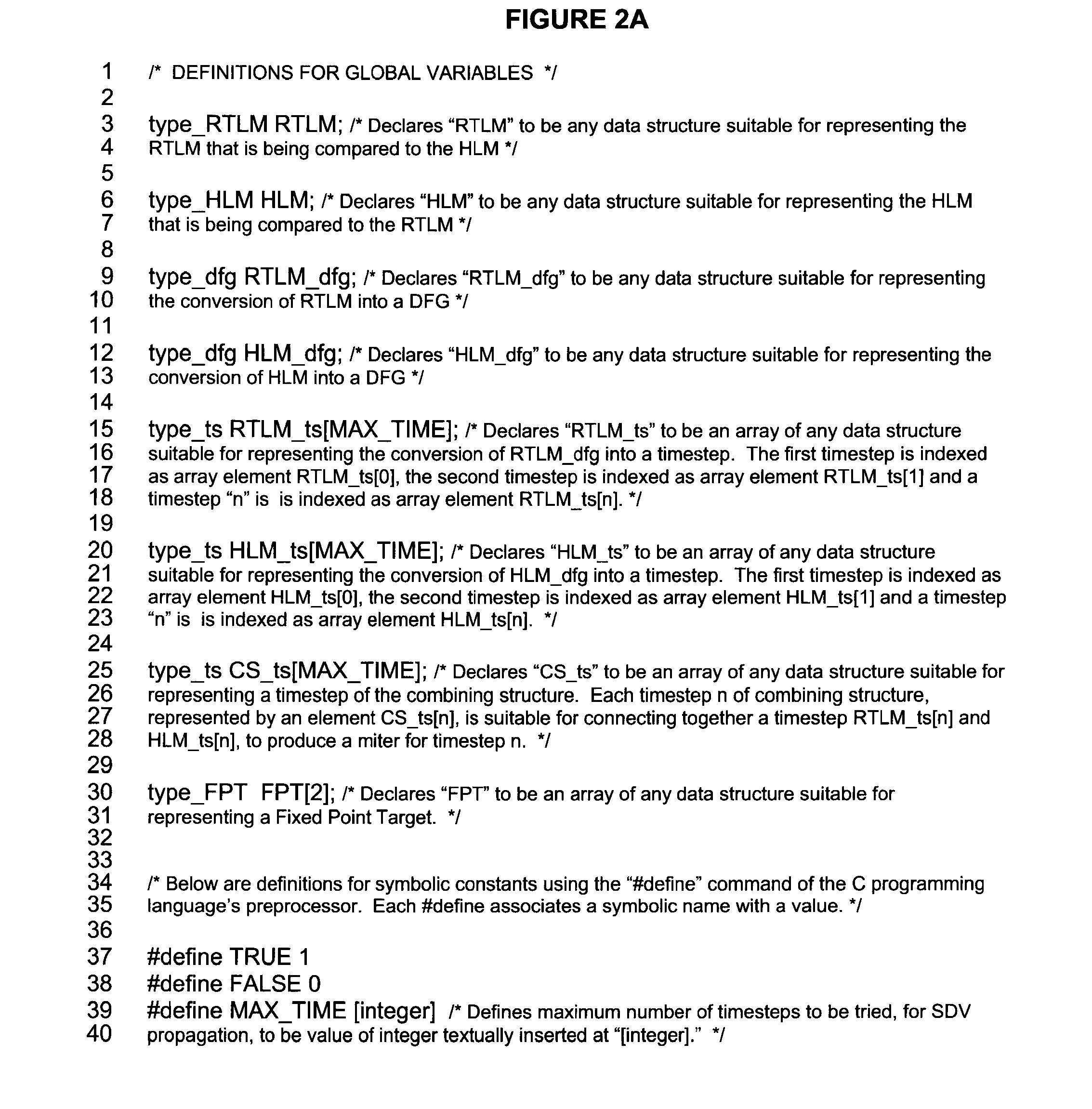Method and apparatus for performing formal verification using data-flow graphs
a data flow graph and formal verification technology, applied in the field of comparison of high-level models to register transfer level models, can solve problems such as time-consuming simulations, mainly manual processing, and high error-prone performan
- Summary
- Abstract
- Description
- Claims
- Application Information
AI Technical Summary
Benefits of technology
Problems solved by technology
Method used
Image
Examples
Embodiment Construction
[0176]Reference will now be made in detail to preferred embodiments of the invention, examples of which are illustrated in the accompanying drawings.
[0177]Wherever possible, the same reference numbers will be used throughout the drawings to refer to the same or like parts.
Table of Contents to Detailed Description
1. Equivalency Testing System
[0178]1.1. Conversion of HLM and RTLM to DFGs[0179]1.1.1. Overview[0180]1.1.2. Within test_for equivalency
[0181]1.2. Conversion Into Timestep Form[0182]1.2.1. Overview[0183]1.2.2. Within test_for equivalency
[0184]1.3. Combining Structure Generation[0185]1.3.1. Overview[0186]1.3.2. Symbolic Data Values (SDVS) and Conditional Equivalence Relations (CERs)[0187]1.3.2.1. Integer SDV[0188]1.3.2.2. ITE SDV[0189]1.3.2.3. Symbolic Boolean Expression[0190]1.3.2.4. CERs[0191]1.3.2.5. MTBDDs[0192]1.3.3. Identification of Nodes As Control or Datapath[0193]1.3.4. Within test_for equivalency
[0194]1.4. Initializations[0195]1.4.1. Overview[0196]1.4.2. Active Time...
PUM
 Login to View More
Login to View More Abstract
Description
Claims
Application Information
 Login to View More
Login to View More - R&D
- Intellectual Property
- Life Sciences
- Materials
- Tech Scout
- Unparalleled Data Quality
- Higher Quality Content
- 60% Fewer Hallucinations
Browse by: Latest US Patents, China's latest patents, Technical Efficacy Thesaurus, Application Domain, Technology Topic, Popular Technical Reports.
© 2025 PatSnap. All rights reserved.Legal|Privacy policy|Modern Slavery Act Transparency Statement|Sitemap|About US| Contact US: help@patsnap.com



